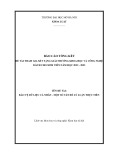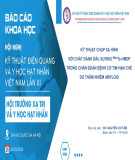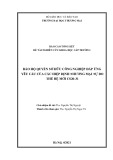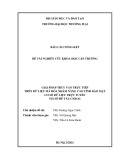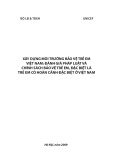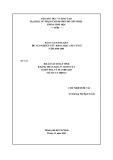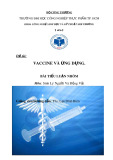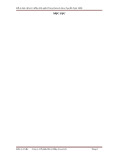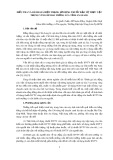
Chandra et al. Virology Journal 2010, 7:118
http://www.virologyj.com/content/7/1/118
Open Access
RESEARCH
© 2010 Chandra et al; licensee BioMed Central Ltd. This is an Open Access article distributed under the terms of the Creative Commons
Attribution License (http://creativecommons.org/licenses/by/2.0), which permits unrestricted use, distribution, and reproduction in
any medium, provided the original work is properly cited.
Research
Intracytoplasmic stable expression of IgG1
antibody targeting NS3 helicase inhibits replication
of highly efficient hepatitis C Virus 2a clone
Partha K Chandra
1
, Sidhartha Hazari
1
, Bret Poat
1
, Feyza Gunduz
2
, Ramesh Prabhu
1
, Gerald Liu
1
, Roberto Burioni
3
,
Massimo Clementi
3
, Robert F Garry
4
and Srikanta Dash*
1,2
Abstract
Background: Hepatitis C virus (HCV) infection is a major public health problem with more than 170 million cases of
chronic infections worldwide. There is no protective vaccine currently available for HCV, therefore the development of
novel strategy to prevent chronic infection is important. We reported earlier that a recombinant human antibody clone
blocks viral NS3 helicase activity and inhibits replication of HCV 1b virus. This study was performed further to explore
the mechanism of action of this recombinant antibody and to determine whether or not this antibody inhibits
replication and infectivity of a highly efficient JFH1 HCV 2a virus clone.
Results: The antiviral effect of intracellular expressed antibody against the HCV 2a virus strain was examined using a
full-length green fluorescence protein (GFP) labeled infectious cell culture system. For this purpose, a Huh-7.5 cell line
stably expressing the NS3 helicase gene specific IgG1 antibody was prepared. Replication of full-length HCV-GFP
chimera RNA and negative-strand RNA was strongly inhibited in Huh-7.5 cells stably expressing NS3 antibody but not
in the cells expressing an unrelated control antibody. Huh-7.5 cells stably expressing NS3 helicase antibody effectively
suppressed infectious virus production after natural infection and the level of HCV in the cell free supernatant
remained undetectable after first passage. In contrast, Huh-7.5 cells stably expressing an control antibody against
influenza virus had no effect on virus production and high-levels of infectious HCV were detected in culture
supernatants over four rounds of infectivity assay. A recombinant adenovirus based expression system was used to
demonstrate that Huh-7.5 replicon cell line expressing the intracellular antibody strongly inhibited the replication of
HCV-GFP RNA.
Conclusion: Recombinant human anti-HCV NS3 antibody clone inhibits replication of HCV 2a virus and infectious virus
production. Intracellular expression of this recombinant antibody offers a potential antiviral strategy to inhibit
intracellular HCV replication and production.
Background
Hepatitis C virus (HCV) infection is a blood borne infec-
tious disease that affects the liver. Only a small fraction of
infected individuals clear the HCV infection naturally. In
the majority of cases, the virus infection overcomes the
host innate and adaptive immune responses leading to a
stage of chronic infection. It has been well recognized
that chronic HCV infection often leads to a progressive
liver disease including cirrhosis and liver cancer. There
are 170 million people representing 3% of the world's
population that are chronically infected with HCV. The
incidence of new infection continues to rise each year at
the rate of 3-4 million [1]. Therefore, HCV infection is
considered a major health-care problem worldwide. At
present there is no prophylactic antibody or therapeutic
vaccine available. The only treatment option for chronic
HCV infection is the combination of interferon and riba-
virin [2]. This therapy is not effective in clearing all
chronic HCV infections. Interferon therapy is also very
costly and has substantial side effects. There is a need for
* Correspondence: sdash@tulane.edu
1 Department of Pathology and Laboratory Medicine, Tulane University Health
Sciences Center, 1430 Tulane Avenue, New Orleans, LA-70112, USA
Full list of author information is available at the end of the article





